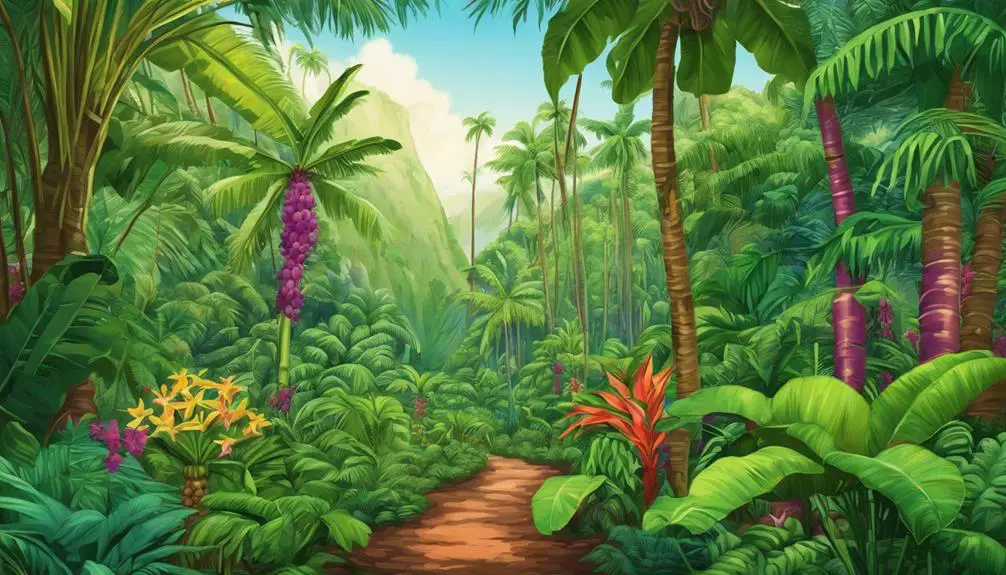Did you know that Hawaii is home to a wide variety of wild edible plants that have sustained the islands’ inhabitants for generations?
From the lush forests to the coastal regions, a treasure trove of flavors and textures awaits those who venture into the world of foraging in Hawaii.
As you explore the diverse landscapes of the islands, you will uncover a culinary adventure like no other, discovering hidden gems that can enrich your meals with a taste of the wild.
Native Hawaiian Edible Plants
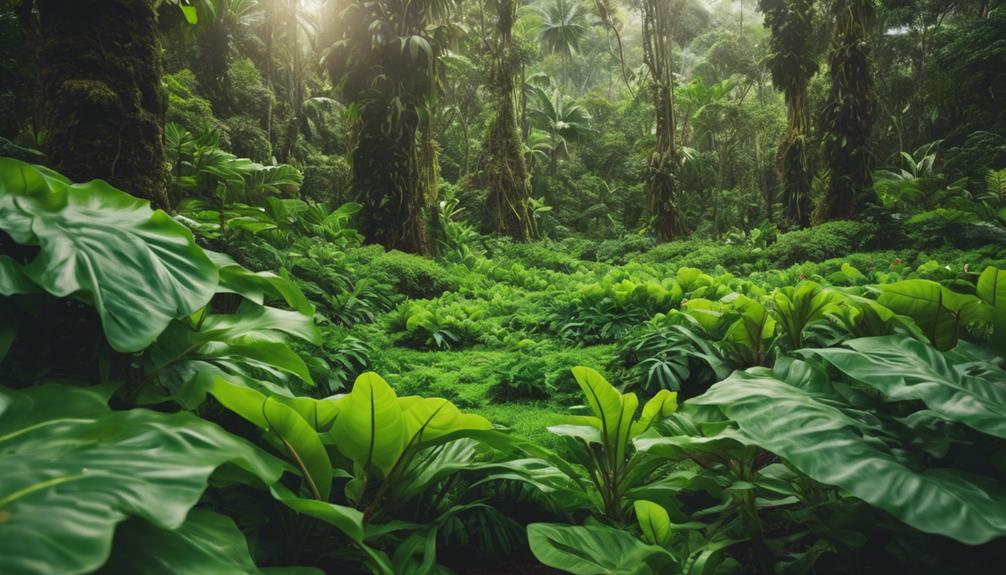
Native Hawaiian edible plants provide a diverse array of flavors and culinary uses, ranging from the nutty richness of Kukui to the starchy sweetness of Ti rhizomes. Hawaiian plants like Kukui, Breadfruit, Seagrape, Ti, and Chinese Hibiscus offer unique tastes and textures for your cooking adventures.
Kukui nuts, for instance, deliver an oily, nutty flavor when roasted, but be cautious as they can act as a laxative when eaten raw. Breadfruit, commonly found near ancient Hawaiian settlements, boasts edible white flesh that transforms beautifully when cooked. Seagrape presents tart to sweet purple-red fruits that can be savored raw or crafted into delightful jelly or wine.
Ti leaves aren’t just for wrapping food; the underground rhizomes possess a delightful sweet and starchy essence that adds depth to your dishes. Embrace the bounty of Hawaiian edible plants to elevate your culinary experiences with these indigenous treasures.
Foraging Tips and Guidelines
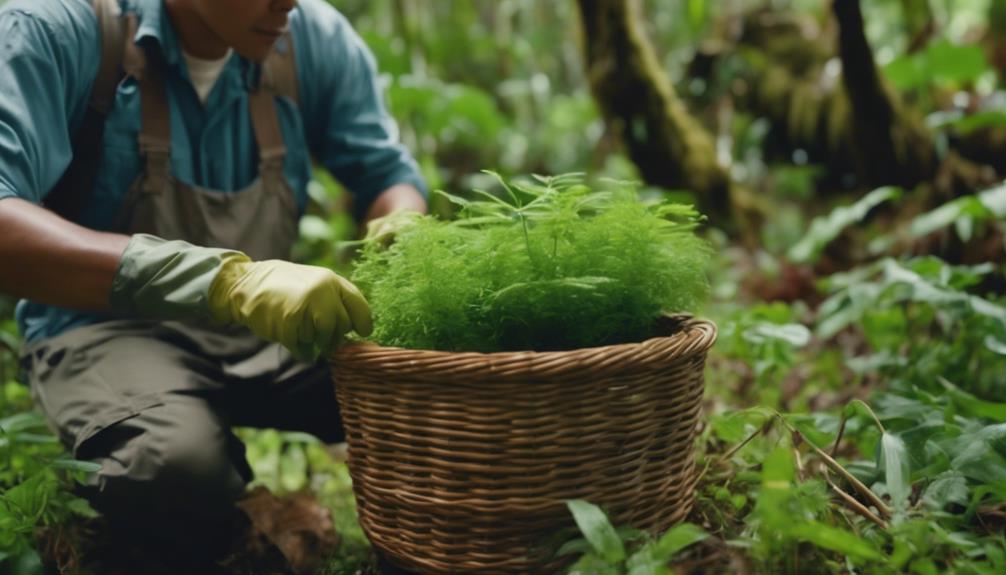
Exploring Hawaii’s diverse landscapes for wild edible plants demands a keen understanding of the varying climate zones and the ability to identify both native and introduced species.
When foraging for wild edible plants like Coconut and Avocado, which are commonly found while hiking, having tools such as a machete can aid in harvesting fruits.
To ensure sustainable foraging practices, it’s essential to employ proper foraging techniques to locate and gather edible plants without causing harm to the environment.
Foragers in Hawaii should strive to balance the consumption of introduced species with the preservation of native flora. It’s crucial to learn about the impact of foraging activities on the local ecosystem to ensure responsible practices.
Tropical Fruits of Hawaii
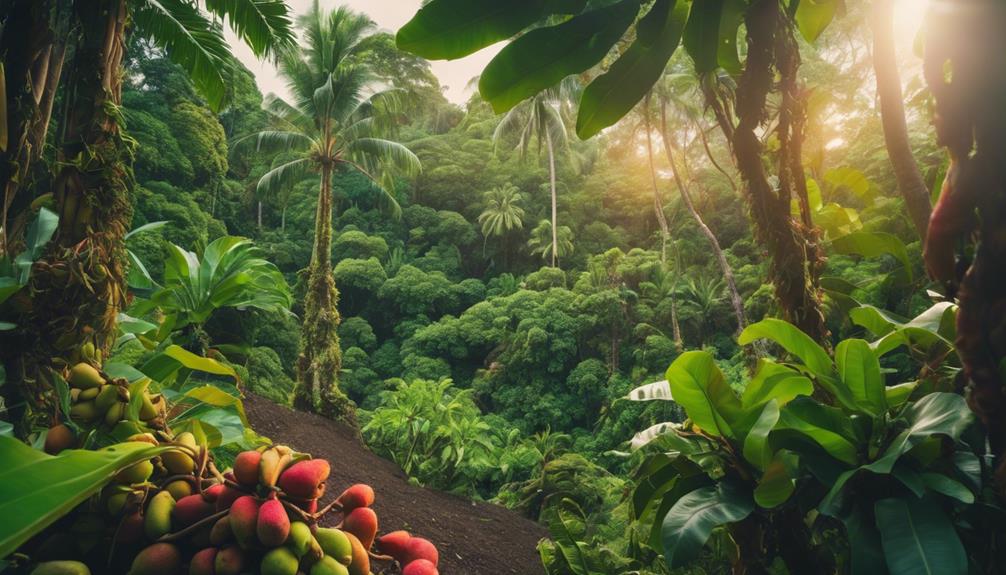
Hawaii boasts a wide array of tropical fruits that thrive in its warm climate, offering residents and visitors fresh and nutritious options for snacks and meals. From familiar fruits like coconut, mango, pineapple, and papaya to more exotic options such as lychee, star fruit, and dragon fruit, the variety of tropical fruits in Hawaii adds unique flavors to local cuisine.
These wild food plants aren’t only delicious but also packed with vitamins, antioxidants, and fiber, making them essential for a well-rounded and healthy diet. The abundance of tropical fruits reflects the cultural richness and agricultural bounty of the islands, providing a paradise for fruit lovers.
Whether enjoyed fresh, in desserts, or as refreshing juices, the diverse range of tropical fruits in Hawaii showcases the natural abundance and vibrant flavors of the region. Don’t miss the opportunity to savor these tropical delights during your stay in Hawaii.
Medicinal Properties of Wild Plants
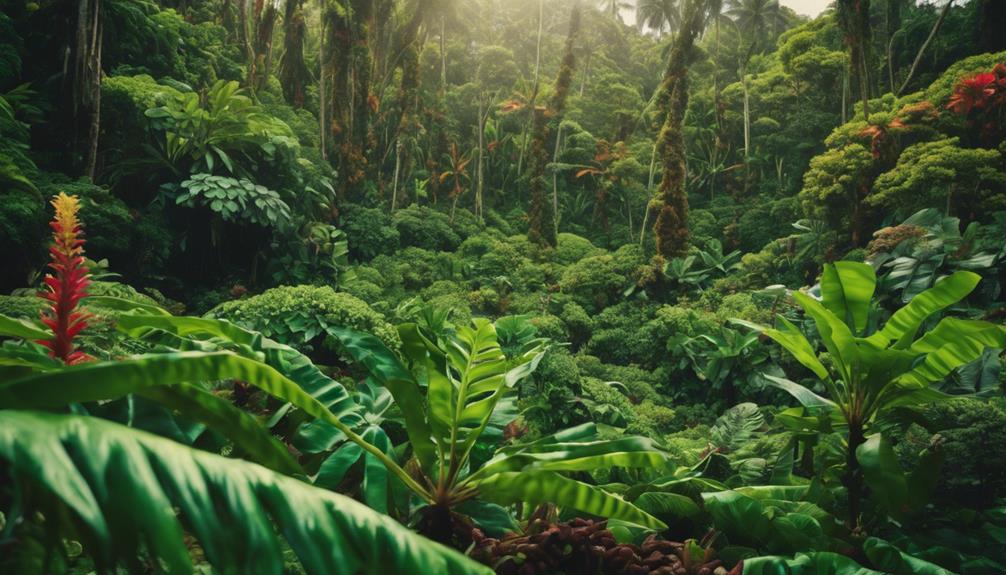
With their potent healing properties, wild plants in Hawaii offer a natural and diverse range of medicinal benefits for those who seek alternative remedies.
Some wild plants, such as Noni, are renowned for their medicinal properties and are often incorporated into health drinks for their various health benefits. Noni is valued for its ability to boost overall wellness.
Another plant with medicinal properties is the guava, which aside from being edible, can be consumed fresh, cooked, or made into juice or jelly. The invasive guava plant in Hawaii provides not only a tasty treat but also potential medicinal advantages.
Ti, a plant native to wet to mesic areas in Hawaii, possesses underground rhizomes that are sweet and starchy, potentially offering additional medicinal benefits.
Even Chinese Hibiscus flowers, known for their edible nature, can be utilized for their medicinal properties and as a decorative, long-lasting food garnish.
Hawaii’s wild flora, including plants like Milo with edible young leaves, contributes significantly to the medicinal diversity available for those seeking natural remedies.
Nutrient-Rich Greens and Herbs
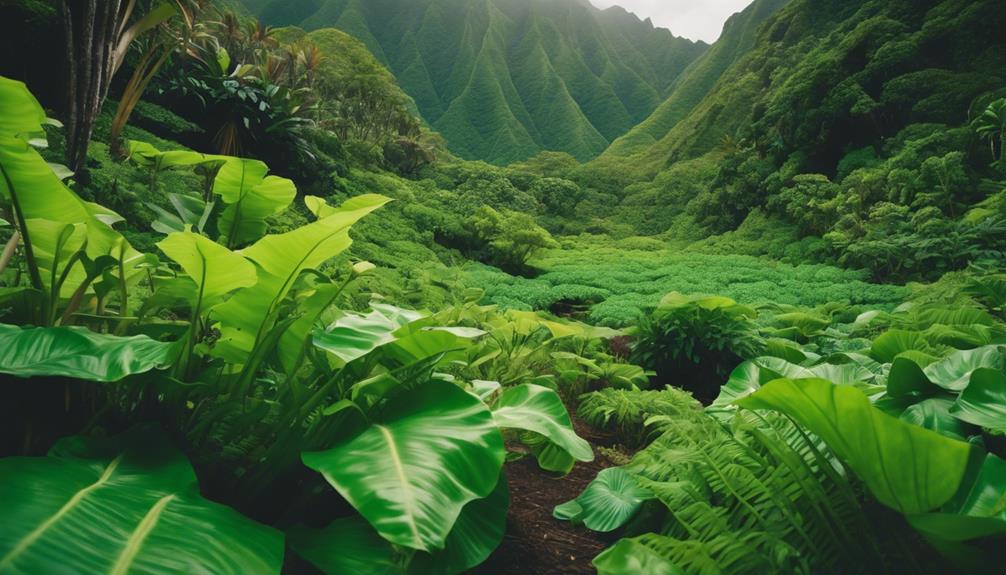
Indulge in the vibrant array of nutrient-rich greens and herbs found in Hawaii. Wild foods like the edible Sensitive Plant (Mimosa pudica) with its unique folding leaves, Jamaican Vervain (Stachytarpheta sp.) offering distinct flavors and potential medicinal effects, and the versatile Ti (Cordyline fruticosa) cherished for its culinary, medicinal, and cultural significance, showcase the diversity of wild edible plants in Hawaii.
The aromatic Cinnamon Tree (Cinnamomum sp.) adds a new dimension to the island’s flora, enticing your senses with its fragrance and potential culinary uses. Exploring these wild foods not only introduces you to a range of flavors and scents but also provides nutritional benefits unique to the region.
Whether you’re seeking new culinary experiences or interested in the medicinal properties of these plants, Hawaii’s nutrient-rich greens and herbs offer a delightful journey into the world of wild edible plants.
Edible Flowers and Blossoms
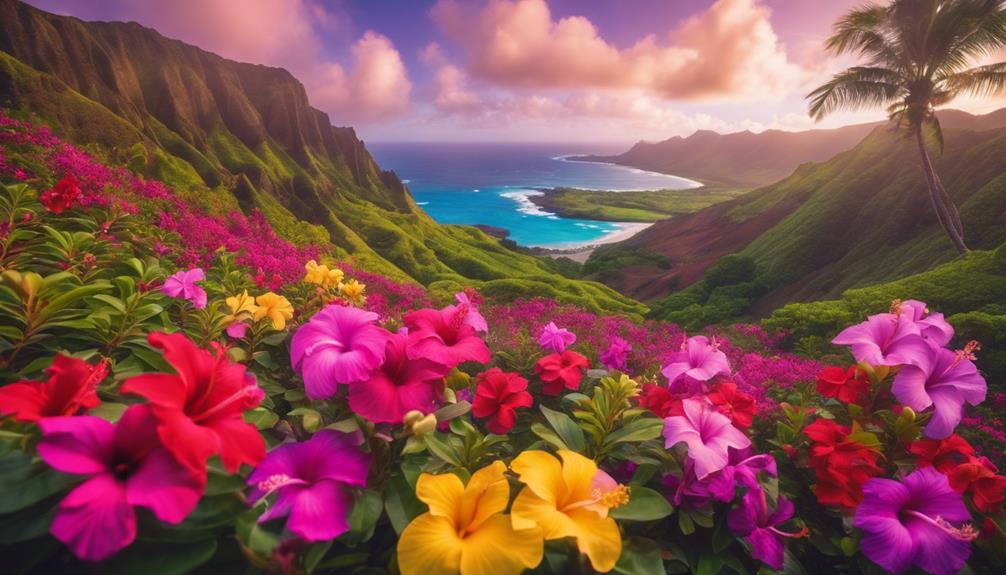
Explore a new dimension of wild edibles by discovering the vibrant world of edible flowers and blossoms in Hawaii. Hawaiian Hibiscus flowers, or Pua Aloalo, can be enjoyed raw or cooked, adding a colorful touch to salads or desserts.
Bougainvillea flowers, known as Pua Kana, offer a bitter taste that enhances the visual appeal of dishes. Daylily flowers, also called Lilikoi, bring a sweet flavor that complements both savory and sweet creations.
Nasturtium flowers, referred to as Pua nasturtium, provide a peppery kick, perfect for garnishing salads or savory dishes. Hibiscus flowers, a staple in Hawaiian cuisine, offer a tangy flavor and a visually appealing element to various culinary dishes.
Embrace the beauty of these wild edibles, incorporating them into your meals to experience new flavors and textures inspired by the lush landscapes of Hawaii. Enjoy the burst of colors and flavors these edible flowers bring to your table.
Sustainable Foraging Practices
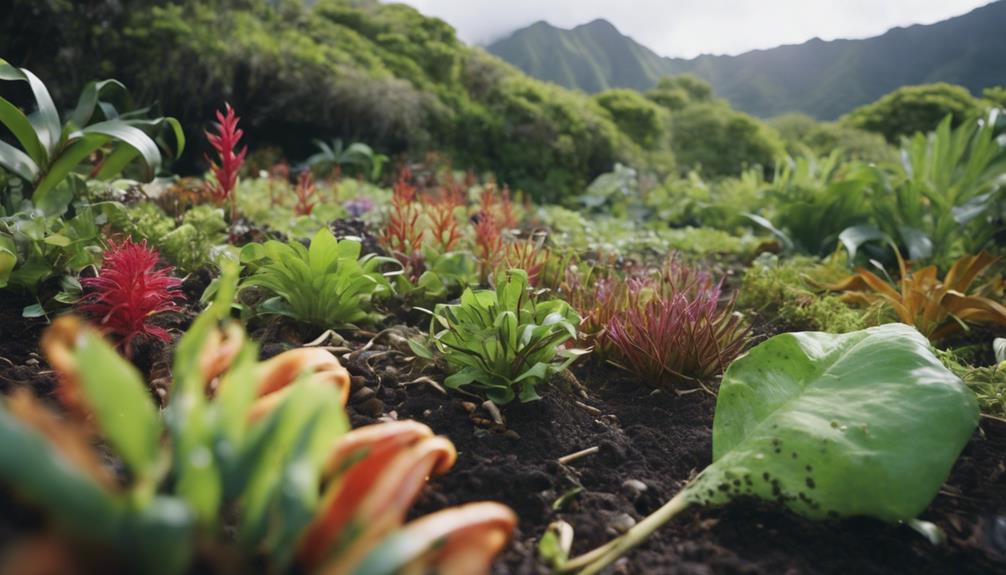
To engage in sustainable foraging practices in Hawaii, one must appreciate introduced species while respecting the local ecosystem. Balancing the consumption of introduced plants with the preservation of native flora is crucial for sustainable foraging in Hawaii. Understanding the impact of foraging activities on the environment is essential to ensure responsible harvesting practices. Knowledge of different climate zones and the ability to identify endemic and introduced species are paramount for sustainable foraging in Hawaii. By appreciating the ecosystem and learning about native and introduced species, foragers can contribute to the preservation of the delicate balance in Hawaii.
When foraging for Food Plants of Hawaii, it’s important to be mindful of the introduced species and their role in the local environment. By incorporating these plants into your foraging practices in a sustainable manner, you can enjoy the diverse offerings while also protecting the native flora. Remember, responsible foraging practices are key to maintaining the ecological harmony of Hawaii’s unique landscape.
Traditional Hawaiian Food Culture
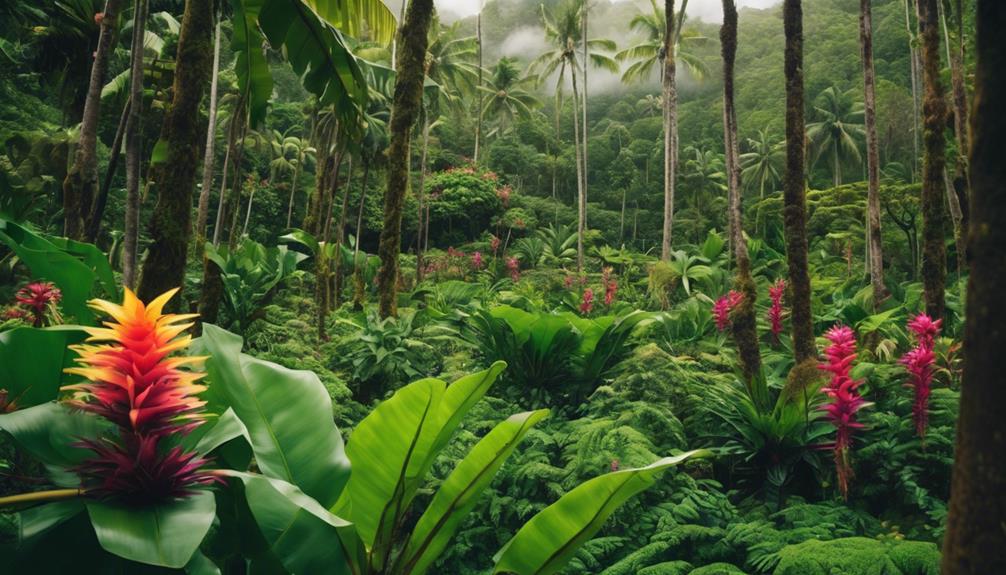
As you consider the traditional Hawaiian food culture, it becomes evident that staple crops like Ulu, Kalo, and Uala have played a significant role in shaping the culinary heritage of Hawaii. These traditional foods formed the foundation of the Hawaiian diet, providing essential nutrients and sustenance for generations. Before the introduction of edible plants, the first peoples in Hawaii relied on fishing, shellfish, and seaweed, showcasing a deep connection to the land and sea. Additionally, important cultivated crops such as Maia (Banana) and Uhi (Edible Yam) were key components of traditional Hawaiian diets, highlighting the diverse range of foods available in the islands.
Over time, the integration of introduced species like Coconut, Citrus, and Guava has further enriched Hawaii’s food culture, adding new flavors and culinary possibilities. Understanding the historical background of edible plants in Hawaii provides insight into the evolution of traditional Hawaiian cuisine, showcasing the resilience and adaptability of the island’s food traditions. Traditional Hawaiian food culture continues to be celebrated and preserved, reflecting a deep respect for the land and its bounty.
Cooking With Wild Edibles
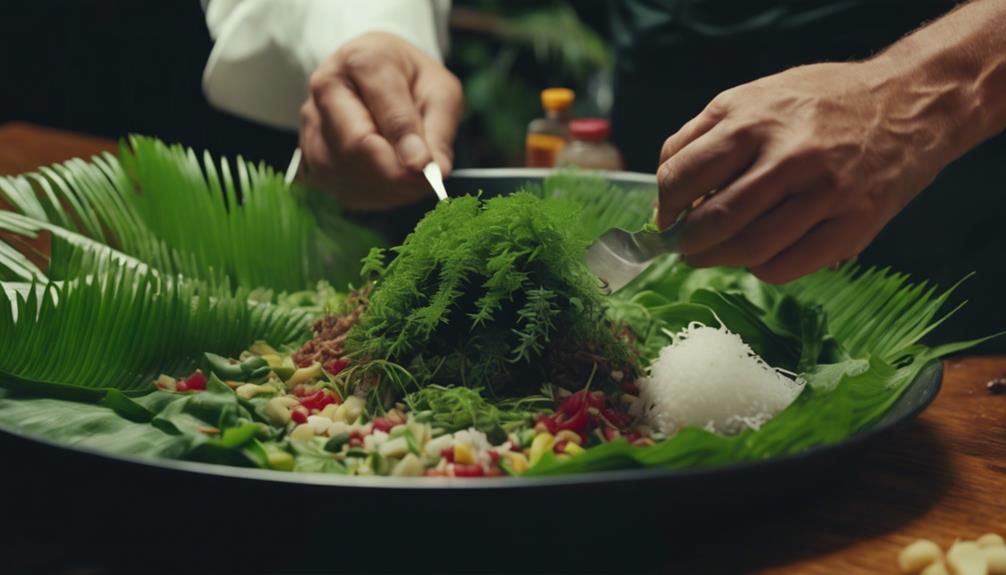
Delving into the world of wild edibles in Hawaii opens up a realm of unique flavors waiting to enhance your culinary creations. Using wild plants like ti leaves, breadfruit, and seagrape can infuse your dishes with a tropical twist, elevating the taste of your food.
Experimenting with noni, guava, and milo introduces you to new flavors and cooking techniques, expanding your culinary horizons. By incorporating these wild edibles into your cooking, you not only add diversity to your meals but also establish a deeper connection to the land and its natural bounty.
Foraging and cooking with wild edibles allow you to explore Hawaii’s rich culinary heritage while supporting sustainable food practices. It’s not just about the taste; it’s about the experience of sourcing and preparing food directly from the land. Embrace the opportunity to discover the abundance of flavors that Hawaii’s wild plants have to offer and let them inspire your culinary journey.
Rare and Endemic Plant Species
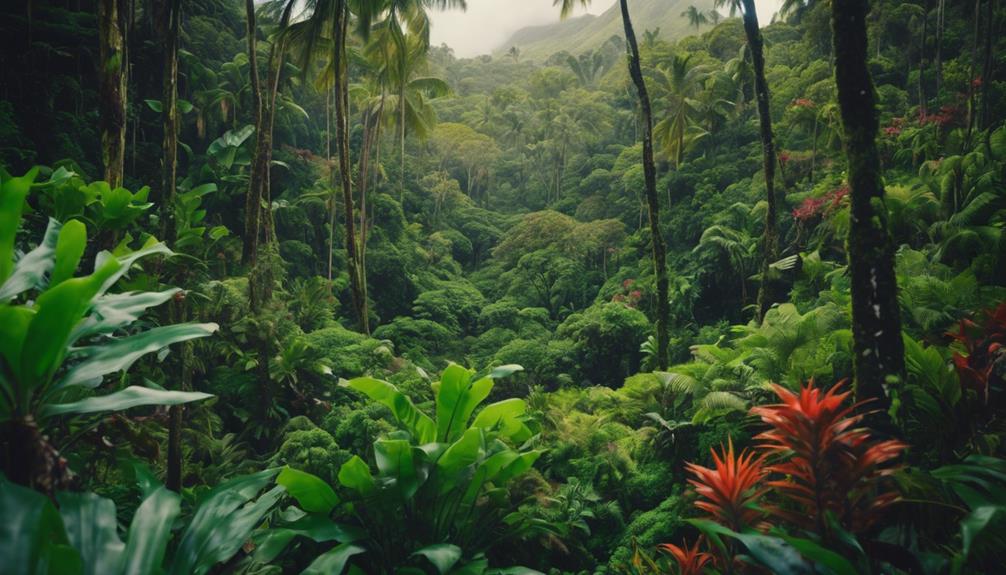
Hawaii’s unique ecosystem boasts a variety of rare and endemic plant species that contribute to the islands’ biodiversity. Endemic plants like the Loulu Palm, the only native palm tree in Hawaii, add to the richness of the region.
The Koki’o, a rare hibiscus species with vibrant, colorful flowers found in dry forests, is a sight to behold. Another unique plant is the Haleakalā Silversword, exclusively located on Maui’s Haleakalā slopes, characterized by its silver leaves that reflect sunlight.
In wet forests, the delicate and intricately patterned Kauaʻi Pelea fern species thrives. The endangered Pua Kala, or Hawaiian Poppy, showcases striking yellow flowers in dry forests and coastal areas.
These rare and endemic plant species are vital to Hawaii’s ecosystem, highlighting the importance of conservation efforts to preserve the islands’ unique flora for future generations.
Harvesting and Preservation Methods
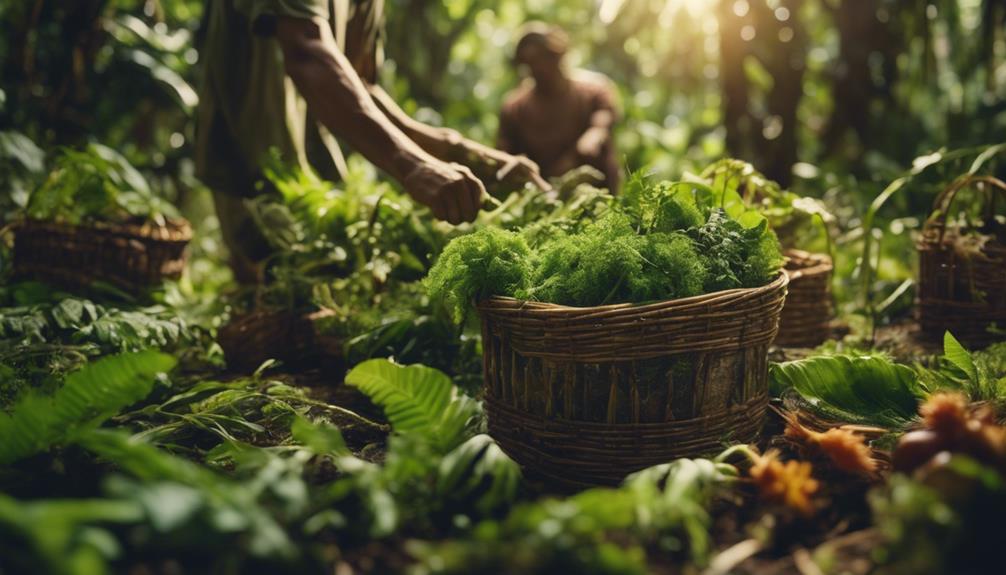
For optimal freshness and flavor, harvest wild edible plants in Hawaii during the early morning.
After harvesting, it’s crucial to preserve them properly to maintain their nutritional value. You can preserve the wild plants by drying them in a dehydrator or air-drying in a well-ventilated area. Storing the harvested plants in airtight containers will also help in keeping them fresh.
To enhance the flavors of the wild plants, consider experimenting with preservation methods such as pickling or fermenting. These methods can bring out unique tastes from the plants you have gathered.
Additionally, you might want to research traditional Hawaiian preservation techniques like salt curing or smoking to discover indigenous ways of preserving wild plants. By exploring different preservation methods, you can create a variety of flavors and dishes using the abundant wild edible plants found in Hawaii.
Cultural Significance of Wild Plants
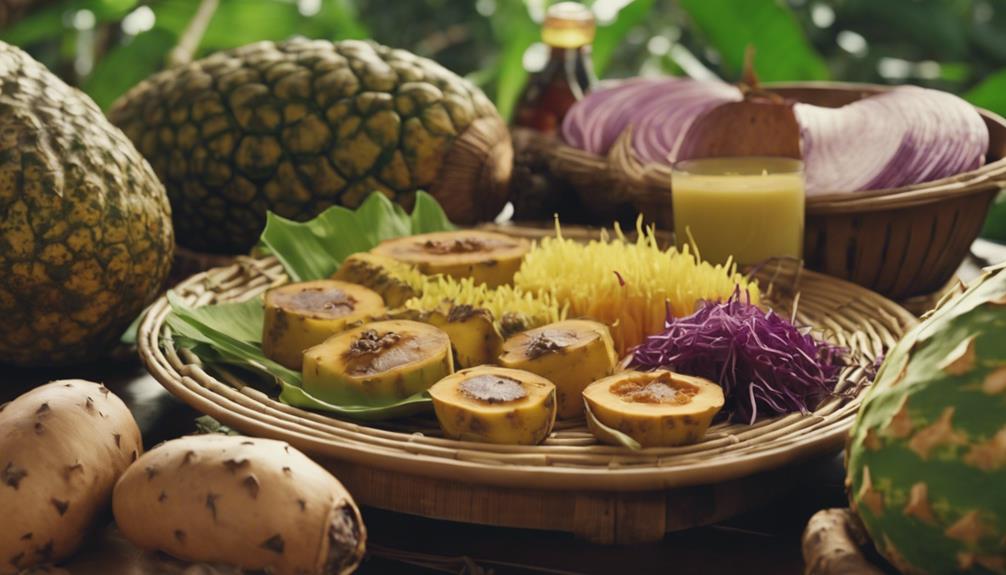
Exploring the cultural significance of wild plants in Hawaii unveils a rich tapestry of traditions and practices deeply rooted in the island’s history. For centuries, the First Peoples have utilized wild plants for sustenance, medicine, and spiritual ceremonies, showcasing their profound cultural importance.
Traditional practices, such as the use of Kukui nuts in rituals, highlight the deep connection between wild plants and Hawaiian heritage. Passed down through generations, indigenous knowledge emphasizes the vital role wild plants play in the cultural fabric of Hawaii, serving not only as food but also as symbols of connection to the land, ancestors, and traditions.
The cultural significance of wild plants reflects a profound respect for the environment and a harmonious relationship with nature, underscoring the importance of preserving and honoring these natural resources for future generations to come.
Safety Precautions for Foraging
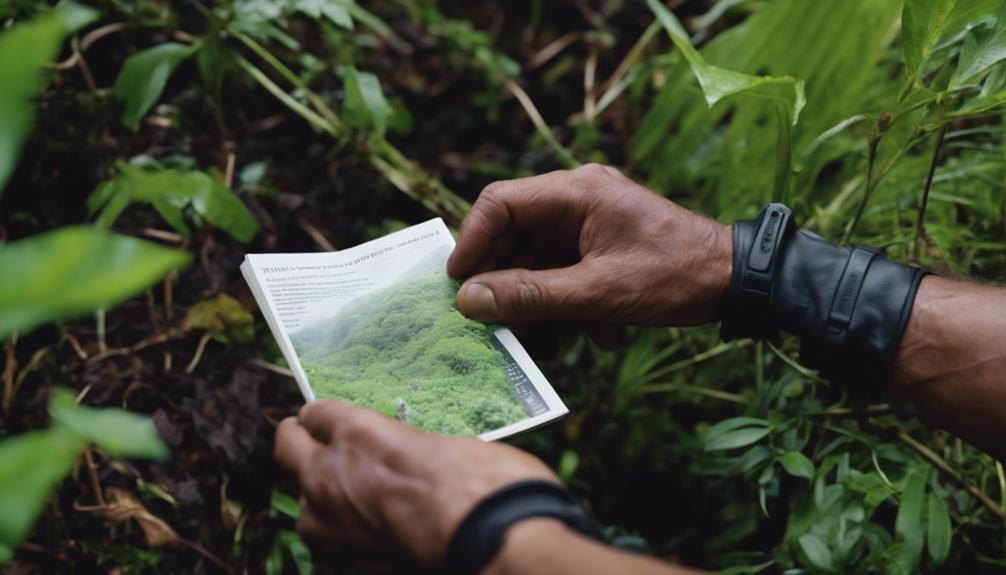
Before embarking on any foraging activities in Hawaii, ensure that you always verify the edibility of wild plants to prevent potential poisoning. When foraging, be cautious of invasive species that might resemble edible plants but are actually harmful.
Consulting with local experts or foraging guides can help you safely identify wild edible plants and avoid toxic look-alikes. It’s crucial to prioritize safety by thoroughly researching and learning about the wild plants in Hawaii before consuming them.
Avoid consuming any plant unless you’re completely certain of its edibility to prevent accidental poisoning. Take extra care when foraging in unfamiliar areas to steer clear of poisonous plants.
Frequently Asked Questions
What Edible Plants Are Native to Hawaii?
You should know that native edible plants in Hawaii include Kukui, Breadfruit, Seagrape, Ti, and Chinese Hibiscus. Kukui trees produce oily nuts, while Breadfruit’s white flesh is tasty when cooked. Enjoy exploring these flavors!
What Hawaiian Flowers Are Edible?
You can enjoy edible Hawaiian flowers like Chinese Hibiscus, Seagrape, and Hawaiian Guava. These plants offer diverse flavors, whether eaten raw, cooked, or processed into different treats like jelly, wine, or juice.
Can You Pick Wild Fruit in Hawaii?
Yes, you can pick wild fruit in Hawaii. It’s a delightful experience to forage for delicious treats like guava and lilikoi. Make sure to identify the fruit correctly before eating to savor the island’s bounty safely.
How Do You Know if a Wild Plant Is Edible?
To know if a wild plant is edible, look for key characteristics like distinctive shapes, colors, and textures. Conduct a taste test on a small part of the plant. Consult with experts and always err on the side of caution.

